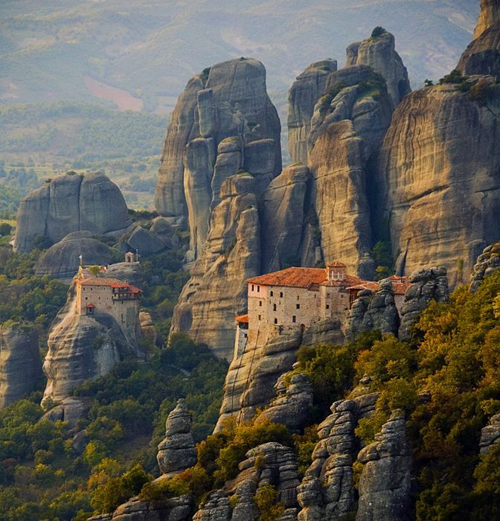I want to tell the story of Troy, the legendary Troy of Helen and the Trojan War, but first I’ll tell about Mycenae, because it’s important to the back story.

the so-called Mask of Agamemnon funeral mask, found at Mycenae and now in the Archaeological Museum in Athens
Mycenae is located in the eastern Peloponnese, about 80 miles from Athens. Some 3500 years ago, it was a powerful presence in the eastern Mediterranean. According to legend, Mycenae was ruled at its peak by Agamemnon, a son of the cursed Atreidae dynasty. He was a deeply flawed character, whose bad decisions perpetuated the kind of bloody family saga the ancient Greeks did so well.
Agamemnon’s ancestor, Tantalus, offended the gods by serving them his own children for dinner and by stealing their famous nectar, ambrosia. Eternal torture for Tantalus was not sufficient punishment for his crimes; his descendants were doomed to lives of violence, betrayal and crushing tragedy.
Agamemnon’s brother was Menelaus. The brothers were married to two sisters, Agamemnon to Clytemnestra and Menelaus to Helen. Yes, that Helen. Before she was Helen of Troy, she was Helen of Sparta, widely considered the world’s most beautiful woman. Helen’s father was the king of Sparta, and when the time came to find her a husband, the royal halls were jammed with suitors. After considering his options, the king decided the least messy way to settle the matter was to draw straws. However, knowing that a few sore losers were inevitable, he first had all suitors vow to support the winner of Helen’s hand if her honor were ever challenged. With that out of the way, straws were drawn. Menelaus won the hand of Helen in marriage and also succeeded his father-in-law as the king of Sparta.
Sometime later, Paris, prince of Troy, visited Sparta, accepted the hospitality of Menelaus, and then ran off with his wife. The real beginning of this story, involving the revenge of a spurned goddess, explains Paris’ audacity, but more about that in my next post. For now, it’s enough to know that Paris either abducted or seduced Helen away to Troy.

ancient pot depicting the abduction of Helen
Agamemnon, the more powerful and aggressive of the Atreus brothers, invoked the oath made by Helen’s suitors, the warrior kings and princes of Greek states, to stand with Menelaus to defend Helen’s honor, and his own. A great war fleet was assembled and set sail, only to get lost and scattered on the way to Troy. Eight years later they reconvened off the coast of Greece and tried to set out again, but the goddess Artemis, who had been offended by Agamemnon, had the ships trapped in the harbor by the wind. With more than 1,000 ships sitting idle, Agamemnon consulted a prophet, who advised him to sacrifice his daughter Iphigenia to appease Artemis, and so he did. Remember I mentioned Agamemnon’s bad decision-making? Well, in the short run, he got what he was after, sailing conditions favorable to advance his war. In the long run, many chapters and more than a decade down the line, he will pay.
Check back next time for the exciting conclusion!
Today at Mycenae, you can see some impressive royal tombs, cyclopean walls (so called because the stones are so large they must have been placed by the one-eyed giant Cyclopes), the grand Lion Gate, and footprints of a palace and associated buildings. Some of the tombs yielded a trove of golden treasure, including the famous and misnamed Mask of Agamemnon, which dates to an earlier period than the Agamemnon we have come to know. The artifacts are not at Mycenae but at the Archaeological Museum in Athens.

Lion’s Gate, Mycenae, Greece

tholos or beehive tomb, Mycenae, Greece

tholos or beehive tomb interior, Mycenae, Greece

fresco in the archaeological museum at Mycenae, Greece
Mycenae makes an easy day trip from Athens or an essential stop on a longer exploration of the Peloponnese.
Click to see our Greece tours that include Mycenae.










 Most habitation is perched on the caldera rim, a sheer 1,000 feet over the sea. Fira is the main town, with the most happening. Oia is a little out of the way, quieter and more romantic. Imerovigli is closer to Fira but quiet and sits higher than either Fira or Oia, so claims superior views. Really, the views are good everywhere, as long as there’s nothing in the way.
Most habitation is perched on the caldera rim, a sheer 1,000 feet over the sea. Fira is the main town, with the most happening. Oia is a little out of the way, quieter and more romantic. Imerovigli is closer to Fira but quiet and sits higher than either Fira or Oia, so claims superior views. Really, the views are good everywhere, as long as there’s nothing in the way.






























